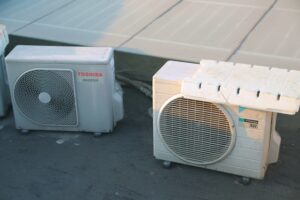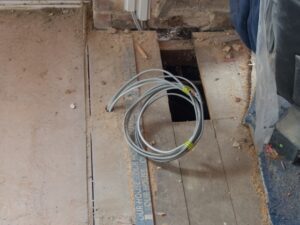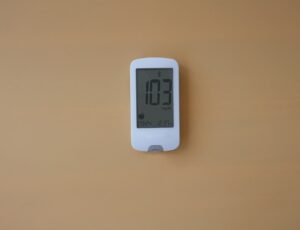Have you ever been in a rush, only to find yourself standing under a cold shower, waiting forever for the hot water to kick in?
It’s frustrating, right?
Whether you’re trying to wash your hands or jump in the shower, waiting for hot water can really mess with your day. So, what’s causing the delay?
One common reason is the distance the hot water has to travel through the pipes. The farther your water heater is from your faucet or shower, the longer it takes for that warm water to reach you. But that’s not the only reason—sometimes, it’s because your water heater is undersized or simply not working efficiently.
But don’t worry, solutions are at hand!
Sometimes, all it takes is a little upgrade or a simple fix.
At Excel Mechanical, we’re experts at making sure your HVAC and plumbing systems run smoothly, so you can enjoy reliable, quick hot water. Our team is committed to delivering solutions that are tailored to your needs and budget.
In this blog, we’ll cover:
- How water heaters work and why they might be slow.
- Common causes of delayed hot water.
- Effective solutions you can try to improve your system.
Let’s get started!
Understanding Water Heating Systems
Water heating systems provide hot water for household and commercial use. These systems vary in type and operation, affecting how quickly and efficiently they heat water. It’s essential to choose the right system to meet your specific needs.
Types of Water Heaters
There are several types of water heaters, each with unique features.
- Tank water heaters store hot water in a large tank, ensuring a steady supply. They operate on either gas or electricity. Gas models heat water faster and are more efficient than electric ones.
- Tankless water heaters heat water on demand without storing it. This means unlimited hot water, though the flow can be limited. They’re generally more energy-efficient than traditional tank heaters because they avoid the energy losses of maintaining a tank full of hot water. Still, initial costs can be higher.
Other options include heat pump water heaters and solar water heaters. Heat pump models are highly efficient but perform best in warmer climates.
Solar heaters use the sun’s energy, which can be cost-effective in sunny areas but might require a backup system.
How Water Heaters Function
Water heaters operate by converting energy into heat using either gas or electricity.
- In tank heaters, the thermostat regulates the temperature. Once the water temperature drops below a set point, the heating element or burner activates to reheat the water.
- Tankless systems use high-powered burners or electric coils to heat cold water instantly as it passes through the unit. These advanced systems can help save on energy costs over time. They require less space and can last longer with proper maintenance.
Common Causes of Delayed Hot Water
Experiencing delays in getting hot water can be frustrating.
Several common issues may affect your system, including the distance water must travel, water pressure problems, sediment in your tank, or faulty plumbing components.
Distance Between Heater and Faucet
The distance between your water heater and faucets can significantly impact the time it takes for hot water to arrive. If your heater is far from the point of use, water travels through more pipes, leading to longer wait times.
Consider changing your heater’s location or investing in a recirculating pump. A pump maintains hot water near faucets, reducing wait time.
By keeping the water constantly warm, you’ll notice a significant improvement in delivery speed.
Low Water Pressure
Low water pressure can also delay receiving hot water.
Pressure issues may arise from various causes, such as blocked pipes or problems with the main water supply.
To solve this, check for leaks or blockages. If pressure remains low, installing a pressure-boosting pump could help. Proper pressure levels speed up delivery, minimizing the wait for hot water.
It is a good idea to have professional evaluations to diagnose and solve persistent pressure problems.
Sediment Build-Up in Tanks
Sediment build-up is another frequent cause of delayed hot water.
Over time, minerals in the water supply can settle at the bottom of your tank, decreasing its efficiency and capacity. Regular flushes of your water heater can prevent and remove sediment. This not only quickens the heating process but extends the tank’s life.
If sediment continues to build up fast, you may need water treatment solutions installed by professionals to improve water quality.
Faulty Plumbing Components
Faulty plumbing components may be the culprit.
Issues such as broken valves, clogged lines, or malfunctioning thermostats can delay hot water delivery.
Inspect your plumbing system for signs of component failure. Replacing faulty parts restores flow and heating efficiency.
Always consider expert assistance for complex replacements to ensure safety and reliability.
Troubleshooting Steps
Several issues could be at play when hot water takes too long to reach your taps. This guide breaks down troubleshooting into three categories: checking components for failure, diagnosing insulation and heat loss problems, and evaluating water pressure concerns.
Checking for Component Failures
Start by examining the water heater and its components.
- First, ensure the thermostat is set to the correct temperature, usually around 120°F.
- Next, inspect the tank for leaks or corrosion, as these signs indicate potential failures.
- Electric water heaters have heating elements that can burn out over time. Use a multimeter to test these elements.
- If they show no continuity, they need replacement. If you have a gas heater, ensure the pilot light is on, and the burner works correctly. Keep an eye out for any strange smells, such as gas or burning.
- If present, contact a professional immediately.
Assessing Insulation and Heat Loss
Inefficient insulation often leads to heat loss.
Begin by checking if your hot water pipes have insulation. Uninsulated pipes lose a lot of heat, causing water to cool down as it travels from the heater to the tap.
Inspect the water heater’s tank insulation as well. Older models might lack proper insulation. If necessary, wrap an insulating jacket around the tank. Make sure there are no drafts in the basement or wherever the water heater is located.
Reducing heat loss speeds up hot water delivery and saves energy.
Evaluating Water Pressure Issues
Low water pressure can significantly delay hot water arrival.
Start by checking the pressure at different faucets. Assess the pressure regulator valve near your home’s main water line if it’s lower than desired.
Ensure no blockages exist in the pipes due to mineral build-up or debris, which could restrict flow.
Improving Hot Water Delivery Times
If your hot water takes too long to reach your faucet, several effective solutions exist. Consider upgrading to a tankless system, installing a hot water recirculation pump, or adding insulation to your pipes and heater.
Each method has distinct advantages that can significantly improve delivery times.
Upgrading to a Tankless System
Switching to a tankless water heater can significantly reduce the time it takes for hot water to reach your taps.
Unlike traditional heaters, tankless systems heat water on demand, eliminating the wait associated with heating stored water. This results in a continuous supply of hot water whenever you need it.
Tankless systems are also more energy-efficient as they only heat water when necessary. While the initial installation cost can be higher, the long-term savings on energy bills can make up for it.
Installing Hot Water Recirculation Pumps
Hot water recirculation pumps are helpful if you’re tired of waiting for hot water.
These pumps create a loop from the heater to the fixtures, ensuring hot water is immediately available. Recirculation systems reduce both wait times and water wastage by continuously cycling hot water through the pipes.
Installing this system is especially beneficial in larger homes or buildings with long distances between the heater and taps.
Insulating Pipes and Water Heater
Adding insulation to your pipes and water heater can help maintain water temperature as it moves through your system.
Insulation reduces heat loss, meaning the water stays hotter for longer as it travels through the pipes. This can be a cost-effective way to enhance delivery times, particularly in older homes.
Use easy-to-install pipe insulation sleeves to wrap around exposed pipes. Insulating the water heater can help keep the water warm, reducing energy usage. Anytime you need assistance, turning to a professional service can ensure the job is done efficiently and effectively.
Professional Assessment and Solutions
Addressing slow hot water issues often requires a professional touch. Licensed plumbers can diagnose the issue quickly and provide targeted solutions.
Each home has its quirks, which means solutions can vary significantly.
Hiring a Licensed Plumber
When hot water takes forever to heat up, a licensed plumber can assess your system for problems like faulty thermostats or sediment buildup. These issues are common culprits that slow down water heating. A professional ensures that your system functions efficiently without unnecessary delays.
Hiring skilled professionals like those at Excel Mechanical means you get a thorough inspection. Thanks to years of experience, our team excels at identifying and fixing plumbing issues.
With us, you can trust the work to be both high-quality and cost-effective.
Custom Solutions for Unique Homes
Every home is different.
Factors like piping layout, water heater size, and daily water demand can all affect how quickly your water heats up. Custom solutions can effectively address these specific needs. For larger homes, upgrading to a tankless water heater might be beneficial, as it provides instant hot water.
We offer solutions that consider both immediate needs and long-term value, ensuring your hot water system works perfectly for your household demands.
Preventive Maintenance and Care
Preventing delays in hot water availability can save energy and improve efficiency. Regular maintenance ensures your water heater operates effectively and can extend its life, saving you money in the long run.
Routine Water Heater Inspection
Checking your water heater regularly helps keep it in top condition.
Look for any signs of leaks or corrosion around the tank. Ensure that the pressure relief valve functions properly, as it plays a crucial role in maintaining safe pressure levels inside the tank.
Verify that the thermostat setting is appropriate for your needs, usually around 120 degrees Fahrenheit. This not only ensures sufficient hot water but can also prevent scalding.
Flushing the Water Heater Tank
Flushing the water heater tank is crucial to removing sediment buildup.
Over time, minerals in the water can settle at the bottom of the tank, reducing efficiency and causing the heater to take longer to produce hot water.
- First, turn off the heater and let the water cool to flush the tank.
- Attach a hose to the drain valve and let the water flow out until it runs clear.
Doing this at least once a year can maintain its performance.
Energy Efficiency and Water Heating
Making your water heating system more energy efficient can save energy and money. Choosing the right model and adopting smart practices are key factors in achieving this goal.
Choosing Energy-Efficient Models
When selecting an energy-efficient water heater, consider tankless options.
Tankless heaters heat water only when needed, which minimizes energy waste. They are up to 34% more energy-efficient than traditional tank heaters, which constantly heat and store water.
Look for models with a high Energy Factor (EF) rating. The EF measures a unit’s efficiency in converting energy into hot water. A higher EF means better performance and lower energy costs over time.
Brands that specialize in efficient models can provide guidance on specific options.
Cost-Saving Practices
Adopting cost-saving practices is essential to maximize efficiency.
Insulating your water heater and pipes helps retain heat, reducing the energy needed to maintain the desired temperature. Meanwhile, regular maintenance, like flushing sediment from the tank, ensures the system runs smoothly.
Setting your water heater to 120°F keeps water warm enough for daily use without wasting energy. Additionally, low-flow fixtures should be used to reduce the hot water used. These practices can significantly decrease bills.
Legal and Safety Considerations
Staying informed about legal requirements and safety is crucial when dealing with hot water systems. This ensures compliance with local regulations and prevents hazards during repairs or maintenance.
Building Codes and Regulations
Before changing your hot water system, know the local building codes and regulations.
These laws ensure that electrical and plumbing systems are installed safely. Non-compliance can lead to fines or other penalties.
In many areas, only licensed professionals can perform certain installations. This helps ensure safety and system performance. Always check if the work you plan to do requires a permit.
Such guidelines protect both the installer and the property’s occupants.
Safety Tips for DIY Repairs
When considering DIY repairs, prioritize safety to prevent accidents or damage.
- Always turn off the water heater’s power supply before starting any work. This reduces the risk of electrical shock.
- Use proper tools designed for plumbing tasks. Avoid makeshift solutions, as they can cause leaks or damage the system. If you’re unsure about a repair, it’s best to contact a professional.
Excel Mechanical offers expert HVAC and plumbing services, ensuring your hot water system is safe and effective. Our team is equipped to handle specific needs while keeping safety at the forefront, protecting you and your home or business.
Frequently Asked Questions
We know waiting for hot water can be more than just inconvenient—it can be a real hassle. But don’t worry, we’ve got some answers to your burning questions. Here are some of the most common concerns we hear, along with helpful solutions!
What could be causing the delay in hot water reaching my taps?
Delays in hot water can be due to the distance between your water heater and taps. The longer the pipes, the longer it takes for hot water to travel. Insufficient insulation or an undersized heater can also contribute to the delay.
How can I improve the time it takes for hot water to reach my shower?
Insulating your pipes can prevent heat loss and speed up hot water delivery. Adjusting the water heater’s thermostat to a higher setting can help, but ensure it doesn’t exceed a safe temperature to avoid scalding.
Are there solutions to expedite the time it takes to get hot water from my water heater?
Installing a tankless water heater, which heats water on demand, may provide faster access to hot water. Consider regular maintenance of your existing heater to ensure it operates efficiently.
Is there a way to fix delayed hot water to the kitchen sink efficiently?
Adding a hot water recirculation pump can significantly reduce wait times. This system keeps hot water moving through your pipes, so it’s readily available whenever you turn on the tap.
Can installing a hot water recirculating pump reduce the wait for hot water?
Yes, installing a recirculating pump can be effective. It creates a loop that moves hot water quickly to your taps, providing near-instant hot water access. This saves both time and water, making it a sustainable option.
What factors could be contributing to the sudden increase in hot water arrival time?
Problems like sediment build-up in your water heater, aging equipment, or a malfunctioning thermostat can slow hot water delivery. Upgrading your system or consulting with a professional may resolve these issues.




